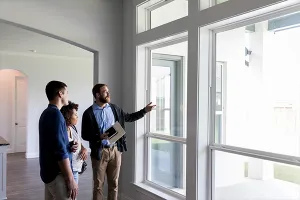
Space. The next frontier. No, not outer space, but the space inside commercial buildings. The “next frontier” is sensory technology to help owners, facility managers, and occupiers identify space usage trends and patterns.
Hybrid work policies have led employer tenants to reassess space needs. They may struggle to balance the desire for reduced occupancy costs with the need to enhance the employee experience. A recent entry in the market is Butlr’s Heatic 2+ wireless and anonymous occupancy sensor, which combines AI with body heat-sensing technology to infer anonymous activity on how people use indoor space.
Most occupancy sensors rely on optical technology, raising privacy concerns. ReKalibrate, a customer data platform for commercial real estate, chose Butlr primarily due to its thermal technology. “There is no possible way to get PII (Personal Identifiable Information) out of those sensors,” says ReKalibrate CEO Brandon Medeiros, citing Boeing’s recent decision to cancel its workplace occupancy program due to privacy concerns.
Conventional occupancy sensor applications understand building amenity usage and room occupancy at any moment. Thermal sensor technology can deliver deeper insight, e.g., that women spend more time washing their hands in workplace restrooms than men.
While sensor data alone is informative, the real value comes from API integration with property management and building management platforms. Users can derive actionable insights that support business goals and financial management, e.g., repurposing or reconfiguring meeting space, eliminating bottlenecks, reducing energy consumption, understanding desk-level occupancy, scheduling cleaning, and assessing the need for temp workspace.
“Flexibility is key, especially for smaller commercial operators,” says Butlr Technologies CEO and co-founder Honghao Deng. “Butlr’s open API technology allows integration with multiple and numerous data sources, including platforms such as Yardi, Appfolio, Cohesion, HubStar, Relogix, and InnerSpace.”
The magnetic sensors move easily from location to location. With a subscription contract, a property manager could install sensors in one tenant space, provide data and analysis for six months, and then move the sensors to a different tenant space.
Anyone considering occupancy sensors must understand the business objective, have sufficient tech support for data analysis, and clearly define a use case. “It’s easy to say you want to use sensors, but it’s harder to know why and where to put them,” says Medeiros. “Without this information, your experience will likely be poor.”
Deng predicts the next big innovation will be around 3D spatial intelligence, including identifying risk and enabling preventive action.









